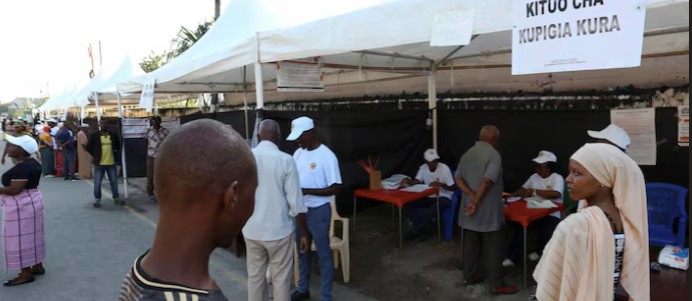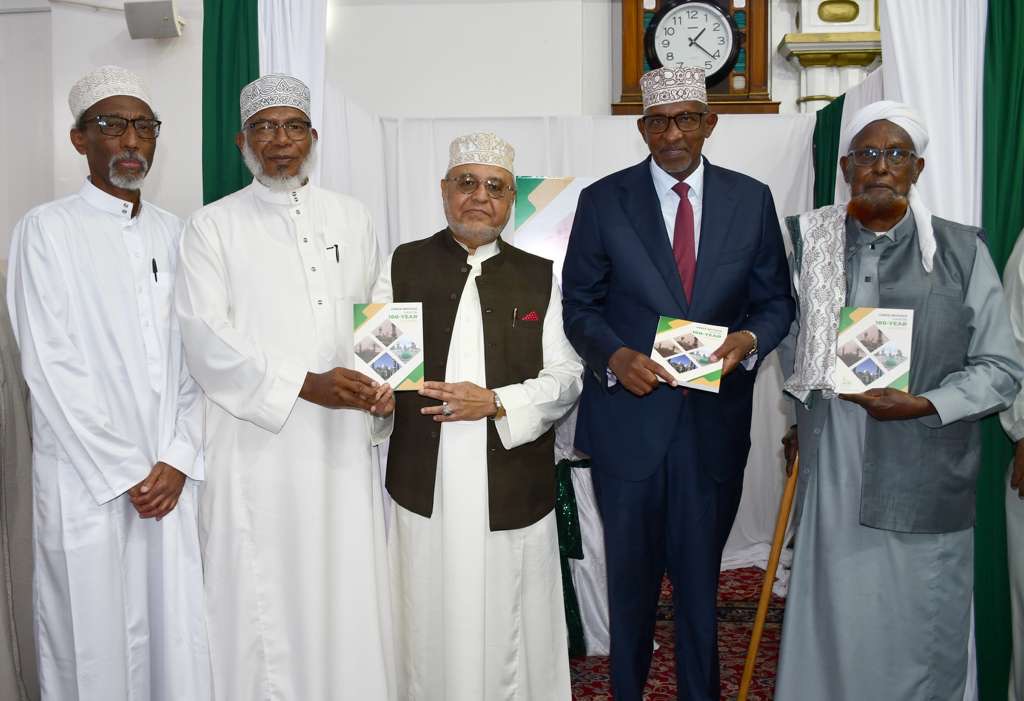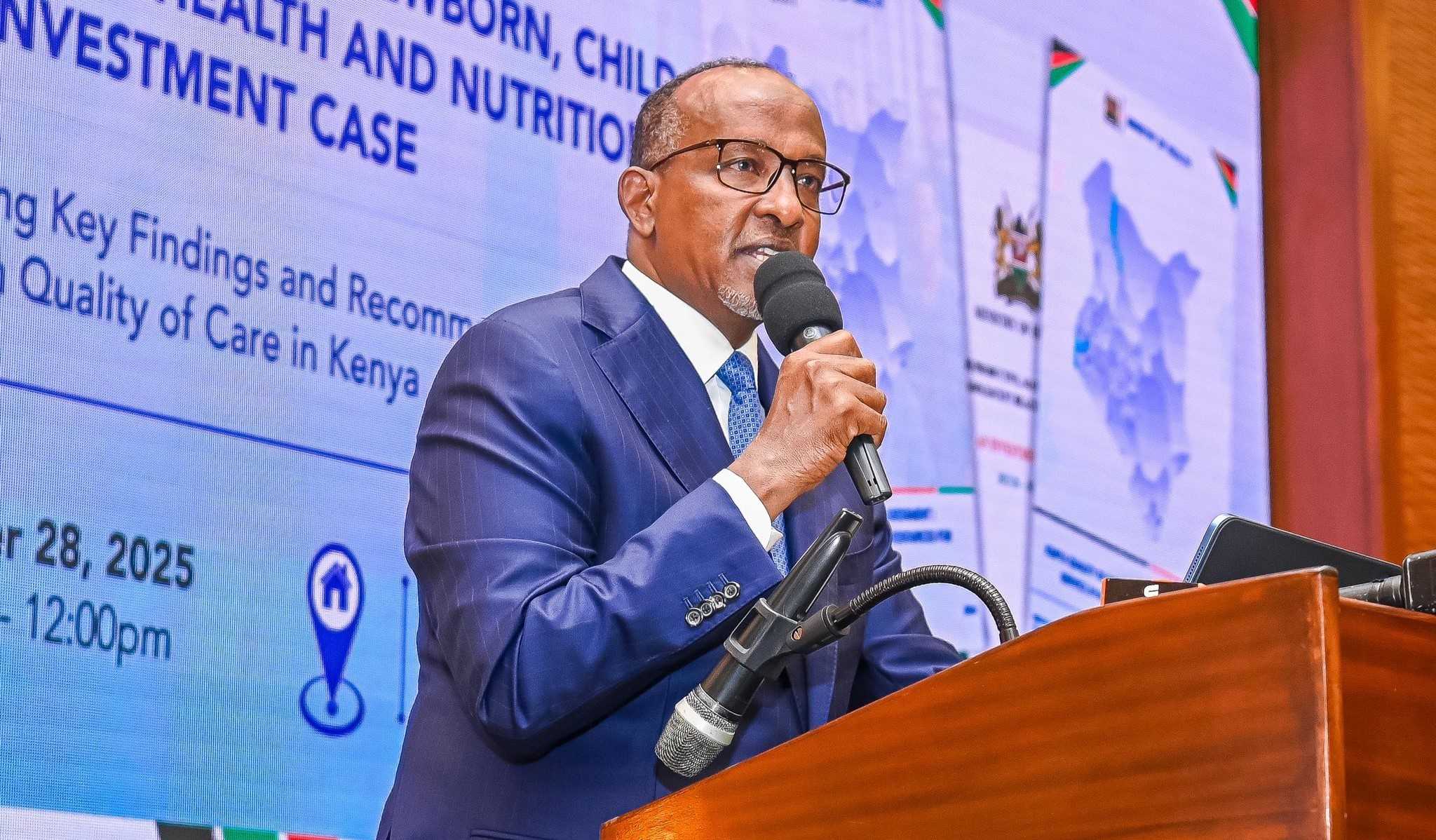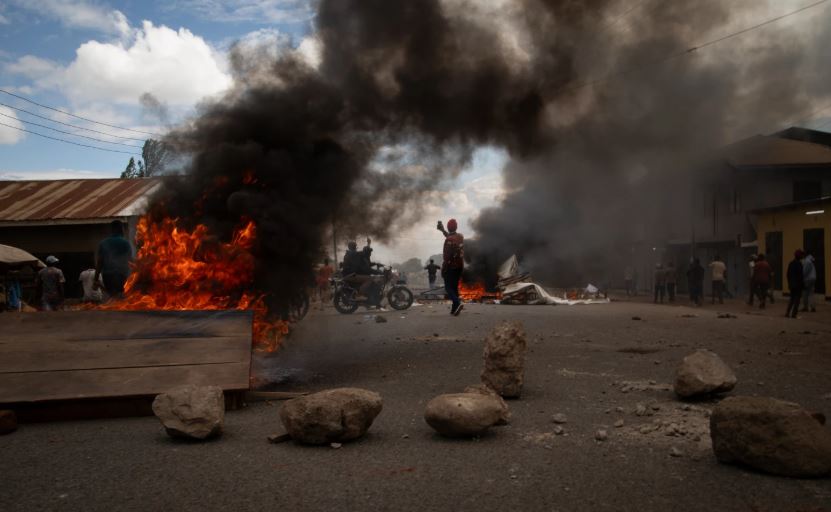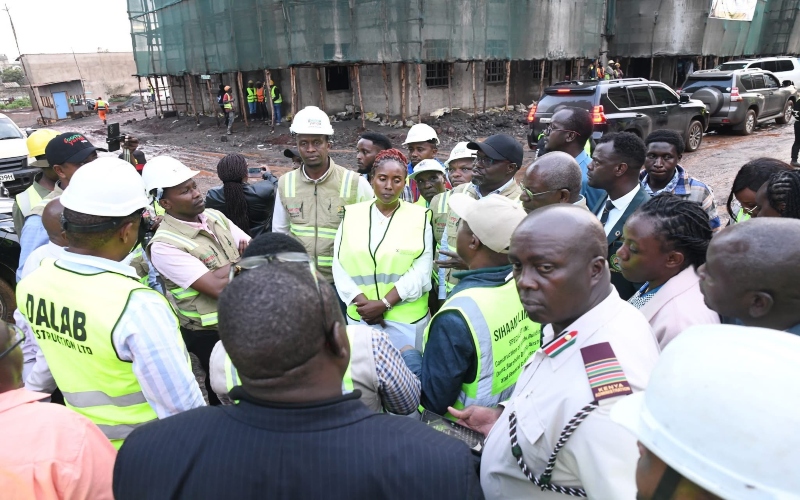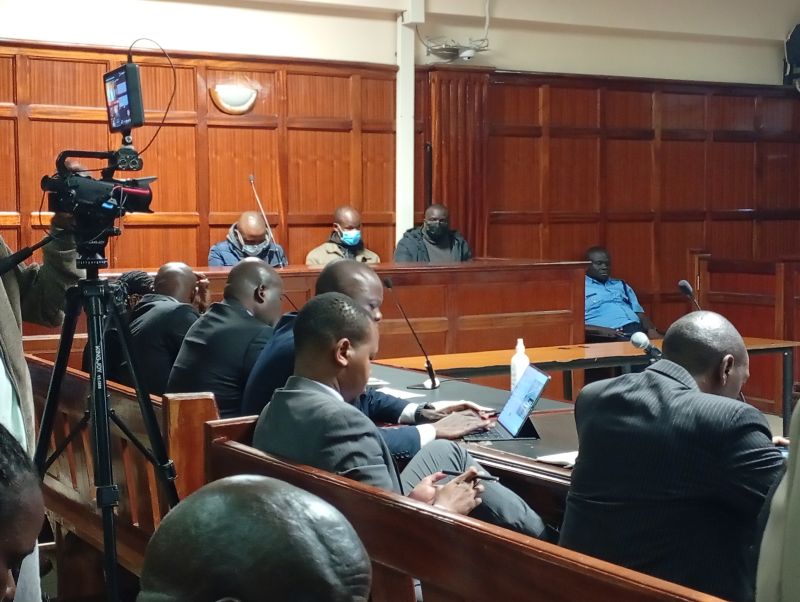Man's emotional, financial pain of caring for wife battling cancer, then losing her
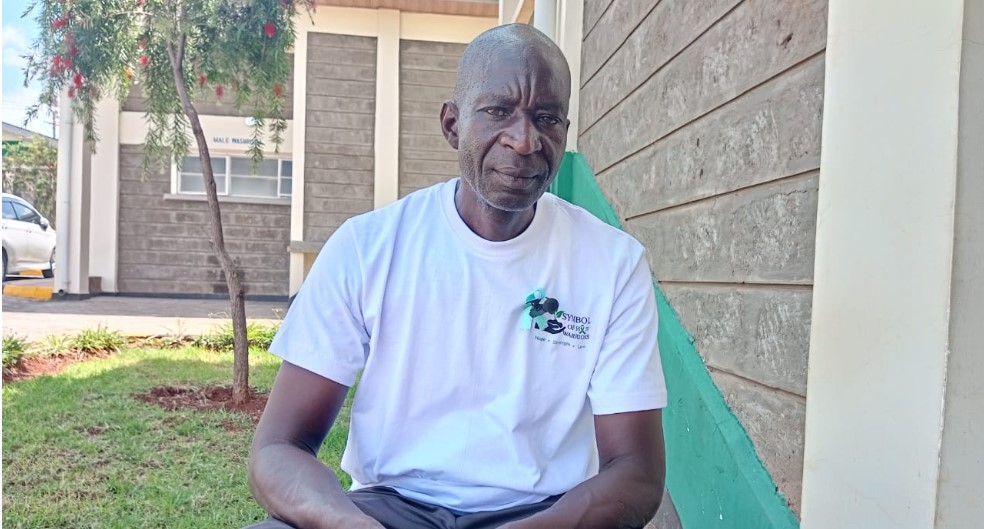
Cervical cancer claims the lives of nine women in Kenya every day, tightening its grip as a silent but deadly threat.
When cervical cancer struck his wife, Pius Onyango never imagined how drastically his life would change.
Yet, he chose to stand by her side — enduring the relentless chronic pain, the tears, the bleeding, and the unbearable stench. Even as his conjugal rights faded into the background, he took it all one day at a time.
More To Read
- Four-country study finds worrying issues with cancer drug quality in Africa
- Study finds Covid-19 mRNA vaccines may boost cancer immunotherapy
- From NHIF to SHA: Kenya's cancer patients pay the price for a broken health system
- Kisumu mother of five beats deadly oesophageal cancer in historic Jaramogi Hospital surgery
- Up to 1 in 5 lung cancer patients non-smokers: study
- Clinical trial offers lifeline for men with recurrent prostate cancer
In 2022, Onyango’s life took an unexpected turn when his wife, Maxmilla Apondi, started experiencing persistent pain, abnormal discharge, and heavy bleeding.
She made frequent visits to a hospital in Busia County, where she was repeatedly put on antibiotics, but her condition never improved.
Frustrated and desperate for answers, Onyango decided to take her to Kenyatta National Hospital (KNH), believing it was nothing serious — after all, she had always been in good health. He was not prepared for the devastating news that would alter their lives forever.
"I was told my wife had stage 4 cervical cancer. At that moment, I felt an unbearable grip of pain, like I wanted to scream. I knew this was more than just a diagnosis — it was a death sentence. But I had to stay strong, for her and our children," he recalls.
Despite the grim prognosis, they embarked on the gruelling journey of treatment.
Apondi responded well initially, and for a while, there was hope. During this time, Onyango made a difficult sacrifice — he quit his job as a laundry cleaner to care for her full-time. With no one else to rely on, he became her pillar, ensuring she took her medication, attended hospital visits, and found comfort in his presence.
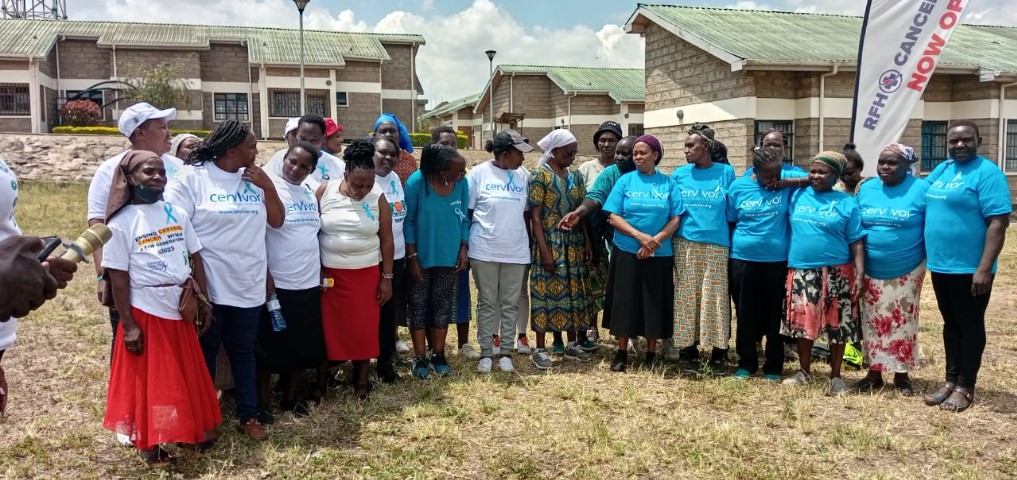 Cervical cancer survivors who participated in a cervical cancer walk pose for a photo at Mama Margaret Uhuru Hospital on February 1, 2025. (Photo: Charity Kilei)
Cervical cancer survivors who participated in a cervical cancer walk pose for a photo at Mama Margaret Uhuru Hospital on February 1, 2025. (Photo: Charity Kilei)
Unbearable financial strain
Living in a small single-room house with their children, the financial strain quickly became unbearable. Onyango borrowed money just to make his wife’s life a little more comfortable, drowning in debt but determined to ease her suffering. Some nights, the bleeding was so severe it terrified him, but he never wavered.
When Apondi’s condition seemed to improve, she decided to visit their rural home. It was a trip that undid everything they had fought for.
"She took a boda boda, and I don’t know what happened, but she started bleeding again. Soon after, she developed a fistula and lost control of her bowel movements. It was devastating — it felt like we were back to square one."
They rushed her back to KNH, but this time, the doctors had no more treatment options to offer. All they could do was provide palliative care, keeping her as comfortable as possible until her final moments.
"I felt so disappointed and let down. My wife had been going to the hospital in Busia, but they never did a thorough examination. Had they detected it earlier, maybe she could have been saved. But instead, we lost her."
On February 2, 2023, Apondi succumbed to cervical cancer, leaving behind Onyango and their six children. Their only wish was that she could have survived, but he takes solace in knowing he did everything he could for her.
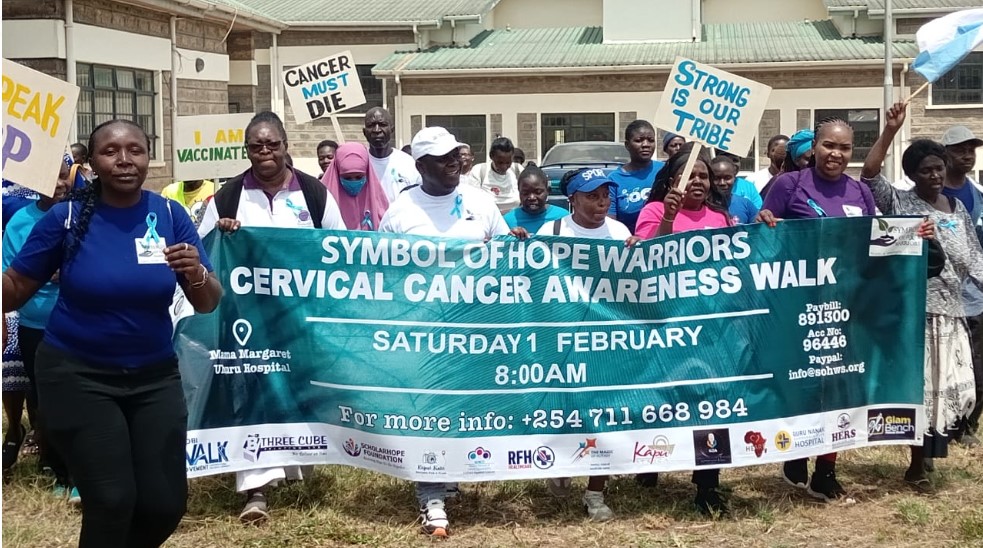 Participants during a cervical cancer awareness walk on February 1, 2025. (Photo: Charity Kilei)
Participants during a cervical cancer awareness walk on February 1, 2025. (Photo: Charity Kilei)
Burden of caregiving
"Many men walk away when their wives are diagnosed with cervical cancer because of the burden of caregiving, the lack of intimacy, and the overwhelming responsibility. But despite all the struggles, I’m proud I stayed by her side until her last breath."
A year after her passing, Onyango still battles the debts he incurred during her treatment while struggling to provide for his children. He takes on any work he can find, hoping to rebuild his life. Though the pain of losing his wife lingers, he remains hopeful that one day, after healing, he might find love again.
Cervical cancer is a type of cancer that develops in the cells of the cervix — the lower part of the uterus that connects to the vagina. It is primarily caused by persistent infection with high-risk strains of the human papillomavirus (HPV), a common sexually transmitted virus.
In its early stages, cervical cancer may not show symptoms, but as it progresses, women may experience abnormal vaginal bleeding (especially after intercourse), pelvic pain, pain during sex, and unusual discharge.
Cervical cancer claims the lives of nine women in Kenya every day, tightening its grip as a silent but deadly threat.
With over 3,000 deaths recorded annually and 5,226 new cases emerging each year, the disease has grown beyond a health crisis, becoming a national emergency.
10 million deaths annually
Globally, it remains one of the deadliest diseases, with the World Health Organisation (WHO) reporting approximately 10 million deaths annually.
The disease not only affects individuals but also deeply impacts their families and communities.
Many households are forced into debt, caregivers experience emotional and financial strain, and some even lose their jobs while trying to provide for their loved ones. The ripple effect of cervical cancer extends beyond the patient, reshaping lives and livelihoods.
Dr Marynne Omenda, working with the Heart (Health Education, Advocacy, and Resource Team) Foundation, addresses the challenges faced by families dealing with HIV and cancer.
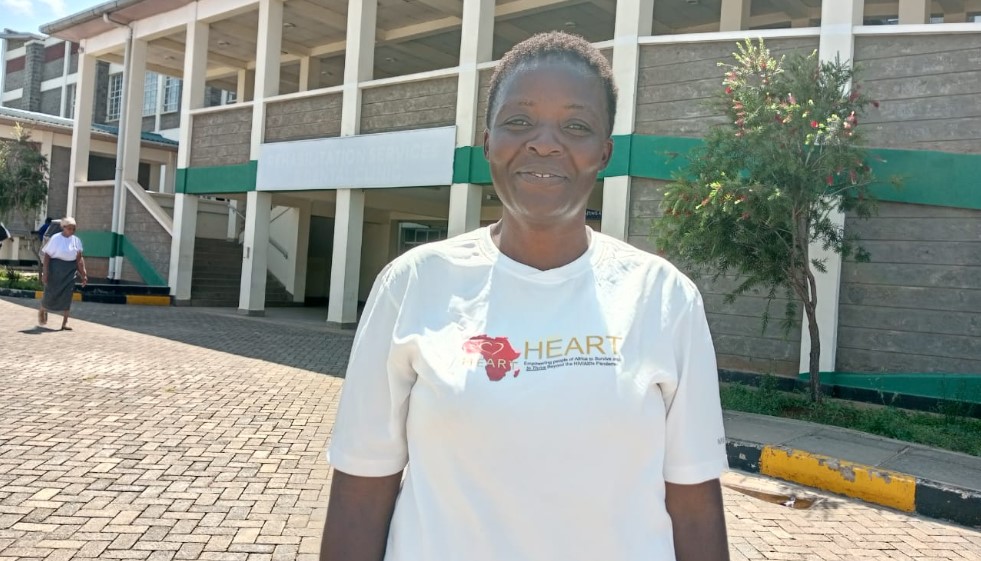 Dr Marynne Omenda who works with the Heart Foundation. She said families dealing with HIV and cancer face numerous challenges. (Photo: Charity Kilei)
Dr Marynne Omenda who works with the Heart Foundation. She said families dealing with HIV and cancer face numerous challenges. (Photo: Charity Kilei)
The foundation supports caregivers and individuals battling these illnesses, while also caring for the growing number of orphans left behind by HIV and cancer-related deaths. The high cost of cancer treatment is a significant burden for both families and organisations trying to assist.
The HEART Foundation provides healthcare services, health education, and support to those with chronic illnesses. Through advocacy and access to essential resources, the foundation empowers local communities to improve health outcomes.
Cancer treatment is costly, with millions spent on care each year. Beyond the financial burden, the disease leaves behind vulnerable communities, including children, widows, and widowers, who often struggle to support themselves after losing a loved one.
“We recently had a case where a mother succumbed to cancer, leaving her children behind. It's a heartbreaking situation, as the children have nowhere to go. Our aim is to prevent such deaths, but at times, the circumstances are beyond our control.”
Stranded and helpless
She notes that after walking alongside patients throughout their journey, seeing the family left stranded and helpless takes a heavy toll on her, as well as on many caregivers. As they struggle to find alternative accommodation, the situation becomes increasingly troubling.
“That’s why we encourage women over 25 to seek treatment and undergo screening early. When cervical cancer is detected at an early stage, it can be treated successfully. We have witnessed many survivors, but late detection makes it much harder to manage.”
While many view cervical cancer as a death sentence, there are several preventive measures available that can significantly reduce the risk of developing the disease.
One key prevention method is the HPV vaccine, which is recommended for children aged 9 to 14 years. This vaccine helps protect against the most common high-risk strains of the human papillomavirus (HPV), which are responsible for the majority of cervical cancer cases.
In addition to vaccination, regular screening for women is crucial. Pap smears and HPV tests can detect precancerous changes in the cervix before they develop into cancer, offering a chance for early intervention and treatment. Early detection through these screenings can greatly improve survival rates, making prevention and timely intervention vital in the fight against cervical cancer.
Risk factors
The risk factors for cervical cancer in Kenya include persistent HPV infection, early sexual activity, having multiple sexual partners, a weakened immune system (especially in women living with HIV), smoking, long-term use of birth control pills, and lack of regular screenings. Limited healthcare access, particularly in rural areas, also contributes to the spread of the disease. Misconceptions about the HPV vaccine further hinder prevention efforts.
HPV is the primary cause of cervical cancer, responsible for 70 per cent of cases globally. While most HPV infections are cleared by the immune system, persistent infections with high-risk strains can lead to cancer.
Despite ongoing efforts, Kenya is still far from reaching its 90 per cent vaccination target, with only 48 per cent of eligible girls vaccinated since the programme began in 2019. This falls short of the 80 per cent target, with only 2.3 million girls vaccinated so far.
Kenya is among the top 20 countries with the highest burden of cervical cancer, reporting about 5,845 new cases and 3,591 deaths annually. Tragically, at least one woman loses her life to cervical cancer in Kenya every day. However, this is a preventable and treatable disease if detected early.
According to the WHO, in 2022, approximately 660,000 new cases and 350,000 deaths from cervical cancer occurred worldwide, with 94 per cent of these cases in low- and middle-income countries.
Top Stories Today

